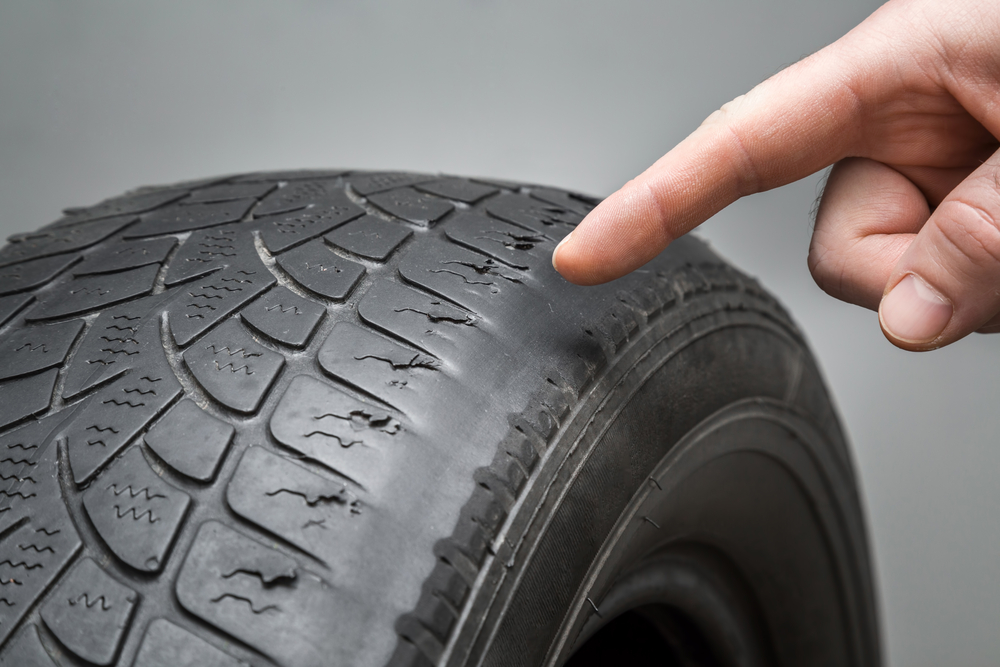
Tire Terminology Tidbits
Tire terminology can be intimidating. Drivers with worn tires have to worry about blow outs, drifting, wheel alignment, handling, and tire air pressure, among other things. The tire is one of the most important features of your vehicle because it’s the one part on the vehicle that’s always on the pavement. Your tires can pick up nails and screws, causing a slow leak. Over or under inflated tires can cause a tire to blow out when driving without warning or when hitting a pothole. It’s important to recognize the signs of routine tire wear and tear before damage to the rest of the vehicle occurs.
Signs of Tire Damage
The following are signs of tire damage:
- experience atypical noises
- jerks in the steering wheel while on the road
- those behind the wheel may also notice their vehicles unnaturally drifting to one side
- bulge in tire
- tire tread (the rubber part of the tire that touches the road) is smooth instead of having grooves
- vibrations
- slow leak so the tire has to be filled every few days
Once you detect something might be wrong with your tires, you can take a quick peek at the tires to determine the issue. Or bring it over to Christian Brothers Automotive Shawnee and let our trusted ASE certified technicians give you a tire analysis free of charge.
Checking Tire Tread
An easy and common tip to evaluate your tire tread only costs a pretty penny. Very simply, the driver uses a penny to determine how close they are to requiring new tires.
With the penny in hand, drivers should place Abraham Lincoln head first into the grooves in the tire’s tread. Ideally, those grooves should be high enough that only half of Lincoln’s head is visible – any more, the tread is worn down. New tires are necessary when all of the 16th president’s head is visible without being concealed by any of the tread.
Now is the best time of year for drivers to administer the penny test, prior to the busy summer travel season.
Selecting New Tires
You can shop for the best tire that meets your need, but there are a few things that you need to know before purchasing tires.
- Tiring Rating: Tires are rated for how many miles you can expect to get out of them and rated for the type of weather you will be driving, for example, a 60,000 mile All Season Tire.
- Tire Size: The size of the tire are three numbers that run together, for example, 225/60/R16. You can find the tire size in your owner’s manual or on the sidewall of the tire. Just like getting new shoes for your feet, your tires need to be the right size for your vehicle.
- Replacement of Tires: For All Wheel Drive (AWD), you need to replace all tires at the same time. With AWD vehicles, all four wheels receive power to drive the vehicle when you accelerate. Therefore, the tires need to have the same amount of tread to ensure that no damage is caused to the transfer case. Replace at least two tires at the same time for front wheel vehicles.
- Road Hazard: Road hazard is like an insurance policy. If you choose to purchase road hazard, and you have a flat tire, the business where you bought the tires will replace or repair the tire for free. This is not a necessary part of the tire purchase, but is a ‘peace of mind.’
Maintaining Your Tires
Learning the value in aligning, rotating, and balancing your tires is a great way to maintain your tires overall effectiveness.
- Aligning: It’s a routine practice to ensure wheels are in line with specifications provided by the manufacturer. It should be performed after equipping the vehicle with new tires or when you feel the vehicle is pulling/drifting to one side of the road while driving down a straight road.
- Rotating: Rotating a car’s tires helps tires wear at similar rates which can lengthen the tires lifespan and optimize its performance and fuel efficiency. Tire rotation for all four wheels should be performed every 6,000 miles or roughly every six months. If you change your oil every 3,000 miles, then rotate your tires every other oil change.
- Balancing: Balancing tires consists of putting weights on the inner and/or outer side of the wheel rims to ensure the tires spin without a wobble. Balancing should be performed when new tires are fitted and also when they are rotated. Tire balancing is an additional way to even tire tread and limit the amount of noise feedback you would experience on the steering wheel.
- Correct PSI (pounds per square inch): Make sure your tires have the correct amount of air in them (PSI). Your owner’s manual and the inside driver’s door panel sticker will tell you the correct amount of air to put in the air. Over or under inflated tires can cause tire blow outs, excessive wear on the tire, and/or hurt gas mileage.
It is crucial to stay on top of regular tire maintenance in order to help ensure the safety of your family and wallet out on the road. Think you need your tires rotated or vehicle aligned? Stop by Christian Brothers Automotive Shawnee or call and make an appointment today!

[1].jpg)
Sunwash-Tech-with-Customer.jpg)




